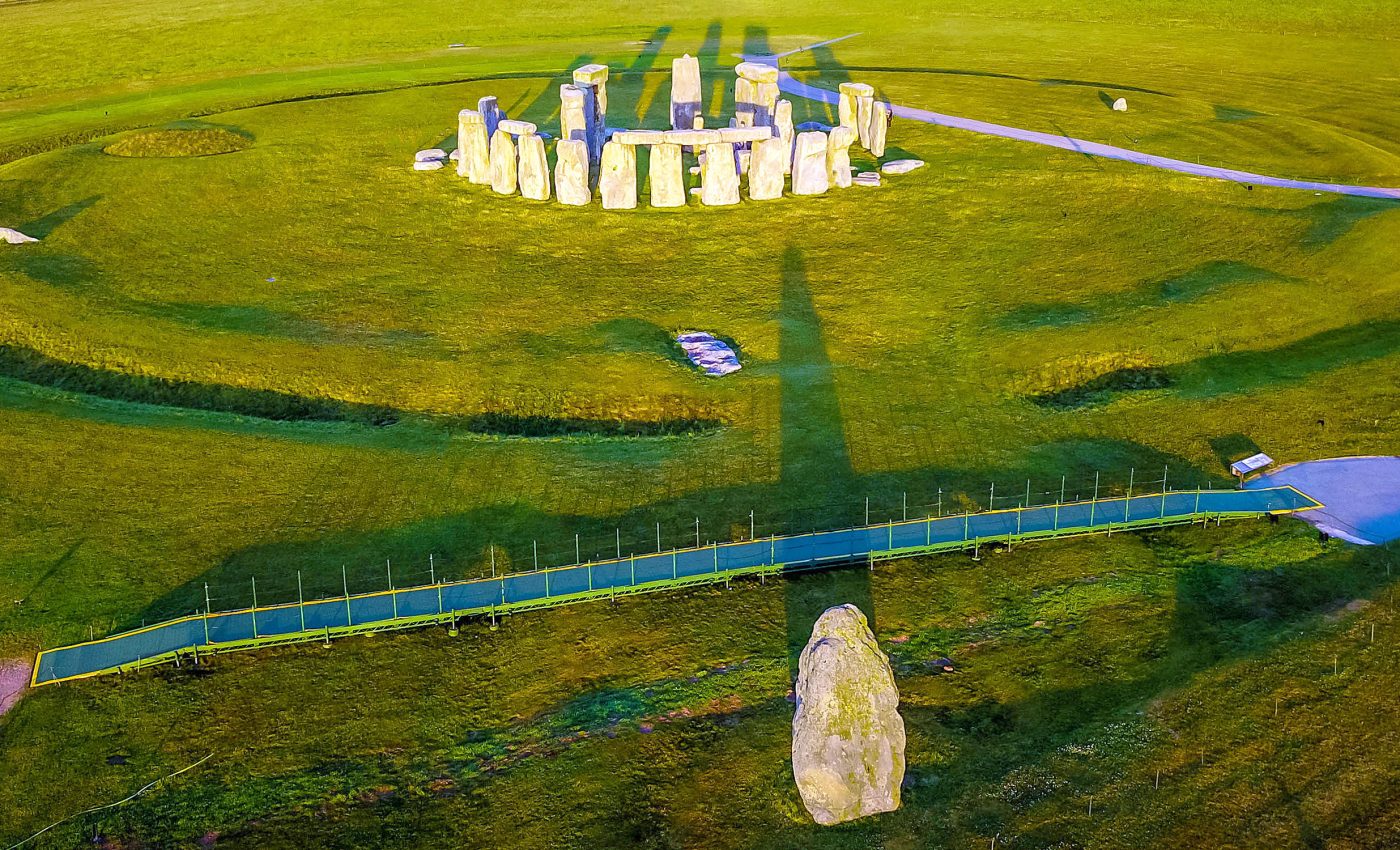
Stonehenge’s famous Altar Stone has surprising origins
New research led by Curtin University has revealed a surprising discovery about Stonehenge’s monumental Altar Stone, which has long been believed to originate from Wales.
The study shows that this six-ton sandstone block actually comes from Scotland, shedding new light on the transportation methods and societal organization of Neolithic communities.
Mystery of the Altar Stone
The research suggests that the advanced level of coordination required to move such a massive stone from Scotland to southern England around 5,000 years ago points to sophisticated transport methods and a highly organized society at the time. This challenges previous assumptions about the technological capabilities of Neolithic people.
The experts conducted a detailed study of the age and chemistry of mineral grains within fragments of the Altar Stone. The stone, a 50 cm thick sandstone block measuring five by one meters, is a central feature of Stonehenge’s iconic stone circle in Wiltshire.
The research was led by PhD student Anthony Clarke from the Timescales of Mineral Systems Group within Curtin’s School of Earth and Planetary Sciences.
Distinct chemical fingerprint
“Our analysis found that specific mineral grains in the Altar Stone are mostly between 1,000 to 2,000 million years old, while other minerals are around 450 million years old,” Clarke said.
“This provides a distinct chemical fingerprint suggesting the stone came from rocks in the Orcadian Basin, Scotland, at least 750 kilometers away from Stonehenge.”
Coming full circle
The findings raise intriguing questions about how such a massive stone was transported over such a vast distance around 2600 BC, given the technological constraints of the Neolithic era.
Clarke, who has a personal connection to this discovery, shared his unique journey: “I grew up in the Mynydd Preseli, Wales, where some of Stonehenge’s stones came from. I first visited Stonehenge when I was one year old and now at 25, I returned from Australia to help make this scientific discovery – you could say I’ve come full circle at the stone circle.”
Understanding ancient communities
Co-author Chris Kirkland, also from Curtin’s Timescales of Mineral Systems Group, highlighted the broader implications of the findings for understanding ancient communities and their connections.
“Our discovery of the Altar Stone’s origins highlights a significant level of societal coordination during the Neolithic period and helps paint a fascinating picture of prehistoric Britain,” said Kirkland.
Transporting such a massive stone overland from Scotland to southern England would have been a monumental challenge, suggesting that a likely marine shipping route along the coast of Britain was used.
“This implies long-distance trade networks and a higher level of societal organization than is widely understood to have existed during the Neolithic period in Britain,” noted Kirkland.
Origins of the Altar Stone
Professor Richard Bevins from Aberystwyth University, another co-author of the study, noted that these findings overturn a century-old belief about the origins of the Altar Stone.
“We have succeeded in working out, if you like, the age and chemical fingerprints of perhaps one of the most famous stones in the world-renowned ancient monument,” said Bevins.
“While we can now say that this iconic rock is Scottish and not Welsh, the hunt will still very much be on to pin down where exactly in the north-east of Scotland the Altar Stone came from.”
Co-author Robert Ixer of University College London’s Institute of Archaeology, expressed surprise at the findings but confirmed their accuracy.
“The findings were genuinely shocking, but if plate tectonics and atomic physics are correct, then the Altar Stone is Scottish,” said Ixer.
“The work prompts two important questions: why and exactly how was the Altar Stone transported from the very north of Scotland, a distance of more than 700 kilometers, to Stonehenge?”
Timescales of Mineral Systems Group
According to Curtin Vice-Chancellor Harlene Hayne, this study is another example of the stellar work being undertaken by Curtin University’s Timescales of Mineral Systems Group with the John de Laeter Center, using state-of-the-art equipment in our GeoHistory Facility that supports important minerals research.
Hayne added that the facility’s specialist mass spectrometers are crucial for analyzing the composition of various materials, including rock-forming minerals, archaeological artifacts, and more.
“Ongoing investment is required to maintain cutting-edge facilities like this, which are crucial for attracting the world’s best minds,” said Hayne.
Clarke explained that he chose Curtin University for his PhD because of the opportunity to work with renowned researchers like Kirkland and access to the world’s most advanced equipment.
“Curtin has given us the freedom and independence to explore fascinating work, such as Stonehenge, and access to the world’s most advanced equipment and expert staff means I can complete all my work there,” he said.
Clarke also praised Western Australia as an outstanding natural laboratory, being home to some of the oldest minerals on Earth. “I’m very grateful to have had the opportunity to do this research in this outstanding place.”
The study is published in the journal Nature.
—–
Like what you read? Subscribe to our newsletter for engaging articles, exclusive content, and the latest updates.
Check us out on EarthSnap, a free app brought to you by Eric Ralls and Earth.com.
—–













